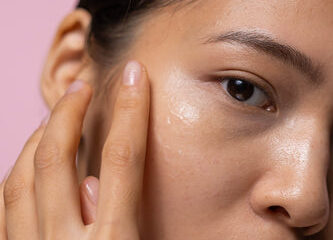All ethnic groups are affected by hair loss, although different racial and cultural groupings have varied requirements and experiences. Acknowledging these distinctions is essential to offering hair restoration strategies that suit the distinct traits and inclinations of every ethnic group. Understanding the diverse needs of different ethnicities is crucial for obtaining the best results, from hair density and texture to cultural conventions and style techniques.
This article delves into the subtleties of hair replacement in Vancouver for many ethnicities, highlighting the obstacles and customized solutions for varied populations.
Considerations for Hair Replacement in Different Ethnic Groups:
The distinct traits and requirements of every ethnic group should be taken into account while evaluating hair replacement solutions. Techniques for replacing hair that are successful for one ethnic group may not be for another. Here are certain factors to consider:
Density and Texture of Hair:
- African Descent: People with African ancestry frequently have denser, coarser, firmly coiled hair. The specific qualities of Afro-textured hair may need to be sufficiently addressed by conventional hair replacement techniques, necessitating specialized products that provide maximum coverage and natural-looking results.
- East Asian: Compared to other ethnicities, East Asian hair is often silky, straight, and has less density. For people of East Asian heritage, hair replacement systems could concentrate on creating a smooth transition with their original hair texture while offering enough volume and coverage.
- Caucasian: The texture and density of Caucasian hair vary, ranging from straight to curly or wavy. Caucasian people may value adaptability and personalization when choosing hair replacement options, as this enables them to fit their hairpiece to their preferred natural hair texture and style.
Cultural conventions and inclinations:
- African Descent: Hairstyles are culturally essential and can be closely linked to identity and ancestry in many African societies. For people of African origin, hair replacement treatments should honor cultural customs and provide options that fit different styling preferences, including locs, twists, or braids.
- East Asian: Social conventions and aesthetic standards are frequently reflected in hairstyles in East Asian civilizations. For those of East Asian heritage, hair restoration techniques may stress smooth, natural-looking outcomes that conform to traditional notions of beauty while permitting stylistic flexibility.
- Caucasian: Personal expression, fashion, and trends can all impact haircuts in Western cultures. Caucasian hair replacement methods can accommodate a variety of tastes and lifestyle choices, ranging from fashionable cuts and hues to natural-looking styles.
Colour and Pigmentation of the Scalp:
- Skin Tone Variation: The selection of hair replacement methods might be influenced by the extensive range of skin tones that ethnicities present, from light to dark. Matching the wearer’s skin tone to the scalp color of hairpieces is crucial to achieve a smooth and natural-looking appearance.
- Regarding Pigmentation: People with darker skin tones may have different scalp pigmentation, necessitating specialist procedures to guarantee a realistic appearance and precise color match. Hair replacement specialists should be skilled in handling these subtleties to get the best outcomes.
Personalized Approaches for Various Ethnic Groups:
Personalization and Customization:
- Tailored Consultations: To fully comprehend the distinct requirements and preferences of people from various ethnic backgrounds, hair restoration professionals should hold in-depth consultations. Customized solutions can be established to match each client’s individual needs by taking into account elements including hair texture, density, cultural standards, and styling preferences.
- Custom-Made Hairpieces: These can be customized to match the wearer’s natural hair color, texture, and scalp features using cutting-edge technology and artistry. Regardless of race, this degree of personalization guarantees a smooth assimilation and a natural appearance.
Specialized Methods and Supplies:
- Afro-Textured Hair Solutions: To address the particular qualities of Afro-textured hair, specialized hair replacement methods and materials are available. These include vented units, lace fronts, and specially manufactured wigs or weaves. For people of African origin, these treatments provide natural results and the highest level of comfort.
- Designs that are Lightweight and Breathable: Hair replacement systems for people with finer hair textures, including those of East Asian descent, may come with lightweight and breathable designs, promoting comfort and organic movement. Sophisticated materials and construction techniques provide a snug fit without sacrificing longevity or style.
Cultural Awareness and Learning:
- Cultural Competence: To better understand the requirements and preferences of various ethnic groups, hair replacement specialists should complete cultural sensitivity training. People from all backgrounds might feel appreciated and respected throughout the hair replacement process if an inclusive and culturally competent workplace is fostered.
- Education and Awareness: People can be empowered to make knowledgeable decisions regarding their hair loss treatment by learning about the many hair replacement methods that are available and clearing up any common misconceptions or worries. Trust and confidence in the hair restoration procedure are fostered by offering resources and support catered to particular ethnicities.
Winding Up
Understanding the subtle differences in skin pigmentation, hair density, cultural standards, and texture is necessary when replacing hair in different ethnic groups. Hair restoration professionals can achieve optimal results and improve the confidence and well-being of those experiencing hair loss by embracing variety and customizing solutions to match the specific demands of each race.
Hair replacement in Vancouver may enable individuals from various backgrounds to embrace their inherent beauty and recover their identity through tailored consultations, specialized procedures, and cultural awareness.



